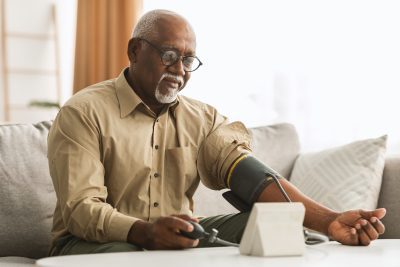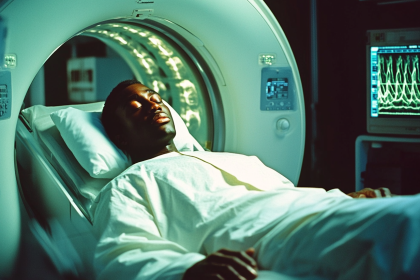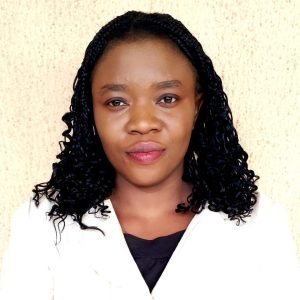When Sarah Martinez received her diagnosis in early 2014, the words hit like a physical blow: stage 1A ocular melanoma, a rare and aggressive cancer that forms in the eye’s pigment cells. What started as a concerning spot during a routine eye exam had turned into a life-threatening disease that would test every ounce of her strength and determination.
Despite immediate radiation treatment, the cancer had other plans. By late 2015, Martinez was facing the nightmare scenario every cancer patient fears — progression to stage 4 with multiple liver tumors and a prognosis that gave her just over a year to live.
When standard treatment reaches its limits
Traditional cancer treatments had failed Martinez, leaving her oncologist with few options to offer. At 35 years old, she wasn’t ready to accept that her story was ending before it had really begun. Her father, a physician himself, suggested something that would change everything: clinical trials.
Martinez had never heard of clinical trials as a treatment option. When she first asked about them, she was told they could be prohibitively expensive, which initially discouraged her from pursuing that path. But her father’s medical background and determination to explore every possibility led them to research experimental treatments across the country.
This decision to look beyond conventional medicine would ultimately save her life, though the journey would test her physical, emotional, and financial resources in ways she never imagined.
The trial and error of experimental medicine
Over the next two years, Martinez explored eight different clinical trials, eventually participating in four and traveling to multiple states for treatment. Each trial brought hope mixed with uncertainty, and the constant evaluation process meant facing potential rejection and disappointment repeatedly.
Her first three trials either didn’t accept her or didn’t produce the results she desperately needed. The travel was exhausting, the paperwork overwhelming, and the emotional roller coaster of hoping for acceptance into each program took its toll on her and her family.
But Martinez’s persistence paid off when she was accepted into her fourth trial, which utilized cutting-edge T-cell immunotherapy. This revolutionary approach involved modifying her own immune cells to recognize and attack her cancer cells more effectively.
Finding success in the fourth attempt
The immunotherapy trial proved to be the breakthrough Martinez had been searching for. Within months of starting treatment, scans showed that all but one of her tumors had shrunk significantly. The immune system boost had essentially trained her body to fight the cancer more effectively than any traditional treatment had managed.
After a final surgery to remove the last remaining tumor, Martinez received the news she had dreamed of hearing: she was cancer-free. The terminal diagnosis that had given her 16 months to live had been proven wrong by experimental medicine and her own determination to never give up.
Today, more than three years cancer-free, Martinez advocates for clinical trial awareness and serves on patient advisory boards to help others navigate the complex world of experimental treatments.
The hidden challenges of experimental treatment
While clinical trials offered Martinez hope when conventional medicine couldn’t, they came with significant challenges that many patients don’t anticipate. The constant travel for treatments and evaluations created financial strain and physical exhaustion on top of fighting cancer.
Since there were no ocular melanoma specialists in her home state, Martinez had to travel to major cancer centers for each trial evaluation and treatment. For one five-week trial in New York, she rented an apartment and essentially relocated her life to focus on treatment.
The uncertainty was perhaps the hardest part. Being removed from trials due to side effects or other factors is common, but each rejection felt like another door closing on her chances for survival. Martinez learned to always have backup options and never put all her hope in a single trial.
Making the best of an impossible situation
Despite the challenges, Martinez found ways to maintain her sanity and even find joy during treatment. During her extended stay in New York, she attended Broadway shows, visited museums, and spent time with friends who lived in the city.
Her fiancé proposed just two days after her stage 4 diagnosis, and together they decided to live fully despite the uncertainty. They bought a house, got a dog, and planned a future even while fighting for her life. This determination to maintain normalcy became a crucial part of her emotional survival strategy.
Family game nights became a lifeline during the darkest periods. Laughter and connection with loved ones provided strength and reminded her that life consisted of more than just cancer treatments and medical appointments.
Lessons learned from the edge of survival
Martinez’s experience taught her valuable lessons about resilience, advocacy, and the importance of never accepting “no” as a final answer when it comes to life-threatening illness. She wishes she had known earlier that being eliminated from trials is normal and doesn’t mean the end of options.
Building relationships with medical professionals who understand rare diseases proved crucial. By the time she found the trial that saved her life, the oncologist was already familiar with her case and medical history, which streamlined the acceptance process.
Most importantly, Martinez learned that hope and healing can come from unexpected places. The experimental treatment that saved her life wasn’t available when she was first diagnosed, proving that medical advances happen constantly and new options can emerge even during treatment.
Advocating for awareness and access
Now cancer-free, Martinez dedicates time to educating other patients about clinical trials as treatment options. She emphasizes that many people, like herself initially, don’t know that experimental treatments exist or how to access them.
Her story demonstrates that clinical trials aren’t just last resorts for desperate patients — they’re often where the most innovative and effective treatments are being developed. For patients with rare cancers or those who haven’t responded to standard treatments, trials can offer hope when conventional medicine reaches its limits.
The power of persistence and hope
Martinez’s journey from terminal diagnosis to complete remission illustrates the life-saving potential of clinical trials and the importance of patient advocacy. Her willingness to travel, endure uncertainty, and never stop fighting opened doors that ultimately led to her cure.
Her experience serves as inspiration for others facing similar diagnoses, proving that even when doctors provide grim prognoses, new treatments and hope can emerge. Sometimes the cure you need isn’t available yet — but it might be just around the corner in a clinical trial.
















